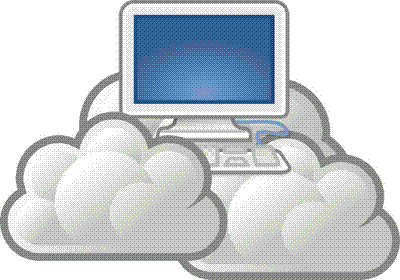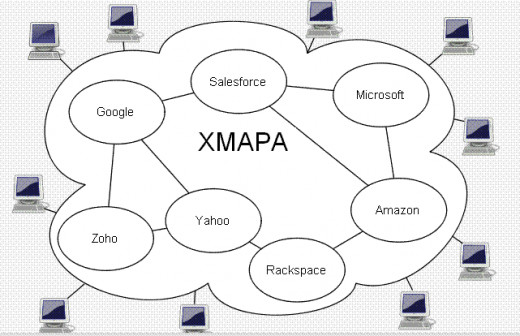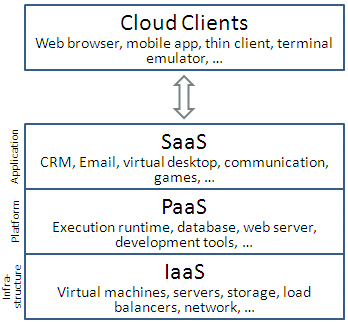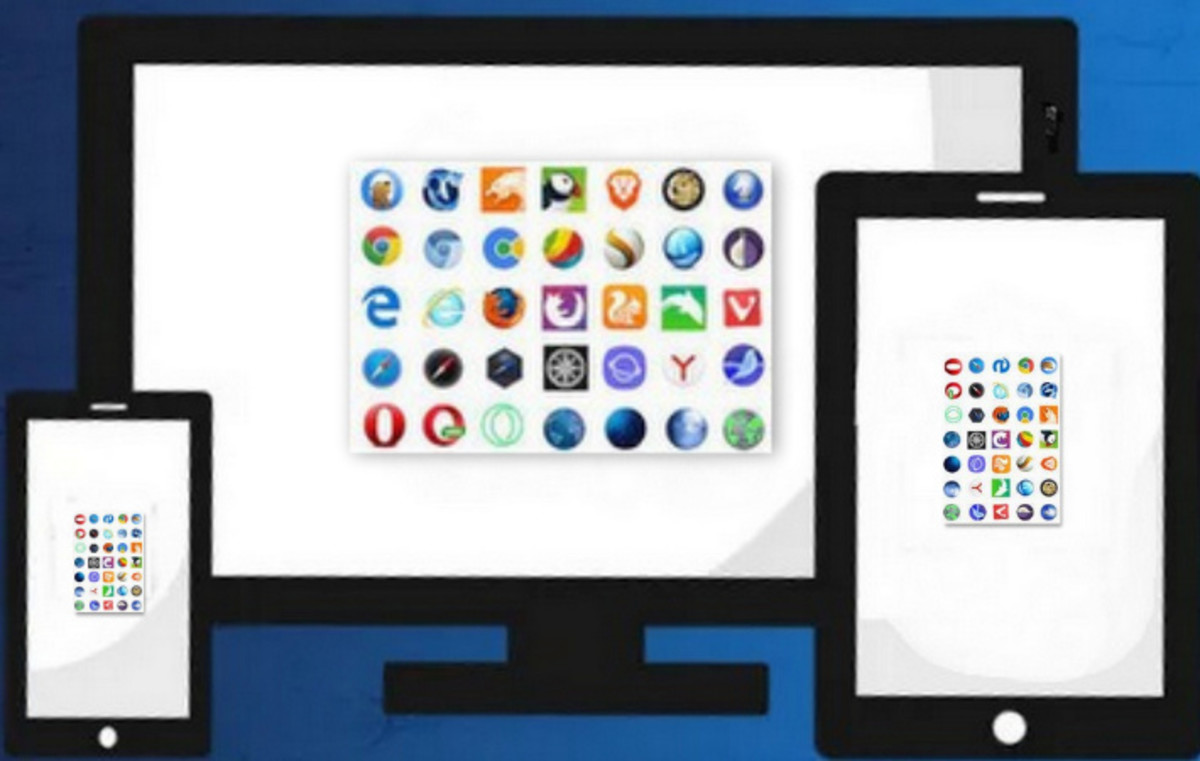What exactly is Cloud Computing?

The Foolish Assumptions of Madison Avenue
I watch a lot of television.
The byproduct of this filthy addictive habit is that I’ve had to endure almost endless amounts of commercials that have challenged both my sense of reality and the limits of my own sanity.
Face it, when a commercial comes on live TV we’re either held captive to endure it or we leave the room for that unknown period of ad time until our program comes back on. As it stands, most commercials go one of three ways, they may attempt to make you laugh, they may attempt to make you think, or they will confuse you completely.
It is the third type of commercial I wish to address in Microsoft’s old campaign on cloud computing.
Before I get too far into this I need to explain that I work in the technology field. I’ve done project management, QA, and web design. In addition, I’ve also done four years as a tech help desk rep. So I’m no stranger to computer stuff. And after I get home from a long day of hearing my share of technobabble, I go home to watch some mindless television programming.
So when my senses were assaulted with the first few Windows 7 commercial concepts of cloud computing of “To the cloud”, I felt my brain start to hemorrhage. It was a relatively new concept that I could only remember hearing about when I got lectured about telecommunication architecture. In that case, I remembered the telephony specialist refer to the “cloud” as the telecommunications network of various switches, servers, and carriers.
And at 8:30 PM on a weekday, I really didn’t want to think about that – especially not at the demand of a Microsoft commercial.
Eventually, after six or seven months of listening to a plethora of Windows 7 Cloud commercials, I decided that I should know more about it. After all, if some fictitious character can act like a tech crime fighter by just uttering “to the cloud”, then I owe it to myself to do some research.
Here’s the skinny of cloud computing.

What the Cloud Actually Is
It took me a long time to figure out the actual analogy of what the cloud represents. For me, it represents how clouds form. Any third grader can tell you the three states of a water cycle in the environment: evaporation, condensation, and precipitation. When there’s a clear sky with no clouds, there is little moisture in the air. As the weather gets warmer water begins to assemble by evaporation and begin to come together through condensation.
The more condensation the bigger the cloud – when there is little condensation there are small clouds.
Keep that concept in your head because it’s important when we talk about computer software demand.
Cloud computing is computer resources on demand charged as a service (or without charge depending on the service). Many of the applications you use every day are part of a cloud computing model – Facebook, Amazon.com, and Google all use a cloud computing model.
We usually look at cloud computing from the point of view of the client. There are business owners that know they need services for their company. This can come under one of three different service types: software, platforms, and infrastructure.
Let’s say that the client wants to use a certain type of software, he also wants to store the records of that software and perhaps make changes to it. He can either do it through a hosted solution or he can do it through a cloud computing model.
If he uses a hosted solution, he will need to buy servers (or rent them), have a software developer create an application to fulfill his functional requirements, and then he’ll need to store the data from that application. All of this is very expensive and will require a substantial investment in work hours, software development, hardware, and operational requirements. If there are problems, bugs, or software updates, he has to have someone come in and attend to them. He’s going to pay for storage, power, and availability 24/7/365 – whether he’s using the hosted service or not.
Or he could have a cloud computing model.
Should the application service he wants be available through the internet, he can simply subscribe to the service. The program has already been developed. If he requires more server storage space for his customers, he will simply pay a higher monthly fee. If for some reason, he loses customers and has less of a need for them, he’ll pay a smaller monthly fee.
It’s like working with a utility company. If you use a lot of electricity, you’ll pay a lot of money to the power company. If you don’t, you’ll use less.
Does it make you angry when commercials use technobabble?

As a Service
As I mentioned there are three main types of cloud computing which are billed under the “as a service”. In short they are known as SaaS (Software as a Service), PaaS (Platforms as a Service), and IaaS (Infrastructure as a Service).
Those are the three general services.
There are also the following:
- Storage as a Service (STaaS)
- Security as a Service (SECaaS)
- Data as a Service (DaaS)
- Database as a Service (DBaaS)
- Test Environment as a Service (TEaaS)
- Desktop virtualization
- API as a Service (APIaaS)
- Backend as a Service (BaaS)
When you boil it all down, it simply means “renting” and expanding your services as you need them. A good example of this is if you go to the Adobe site and decide that you want to learn and use PhotoShop, Illustrator, and Dreamweaver for your Web Designing needs. Now, if you know anything about any of these products, they are mucho expensive. As a poor web designer, you know you’re going to need these products – what’s more, you’re going to need to really learn these products. So instead of making a major cash investment into these software products, you can rent them from Adobe through the internet. You subscribe to Adobe to use that application and for a temporary period of time, you can use those applications as tools for your web design business at a fraction of the cost.
Going back to the “cloud analogy” I mentioned before.
If you are business owner who has a lot of employees who are using a specific application, you can spend a bundle on software licenses that have to be unique on every PC or you can simply use a cloud computing alternative that is accessible through the internet. The more users and space you need, the larger your cloud. As you gain and lose people the bigger and smaller your cloud becomes. You pay for what you use when you need it.
Cloud Computing on Amazon
Final Words
Cloud computing is a great tool for a small business or a business that wants to remain agile while getting the same type of hosting services as the big companies at low cost. It allows businesses to keep their needs scalable and allows them to focus on their business instead of the day to day hassle of maintaining their tech.
After all, wouldn’t it be better to know that an entire organization is keeping watch over your data and backups rather than your overburdened office manager? If you are a business owner and you’re sweating over daily backups instead of focusing on your actual profession, you either are going about things all wrong or you’re just an anal retentive psychotic.
Cloud computing – Seriously, it’s the future of small businesses.
Is it for everyone? No, of course not.
There are businesses out there that require an abnormal amount of security and require that extra bit of privacy over all of their data. Plus, sometimes, you need a closed system that have 0% chance of being hacked into.
If it was never clear what cloud computing was, hopefully, I’ve cleared things up for you.
And don’t think I’ve done this hub for you. I did it for me. Because there is nothing I hate more than having a commercial say things to me that I don’t understand. When they assume that everyone is a hardware or software aficionado, there’s a breakdown in communication and an unnecessary requirement to be more tech savvy than you need to be.
That is precisely the reason why cloud computing exists – to bring the tools of a successful business to people who are no rocket scientists and get down to the business of getting business done.









